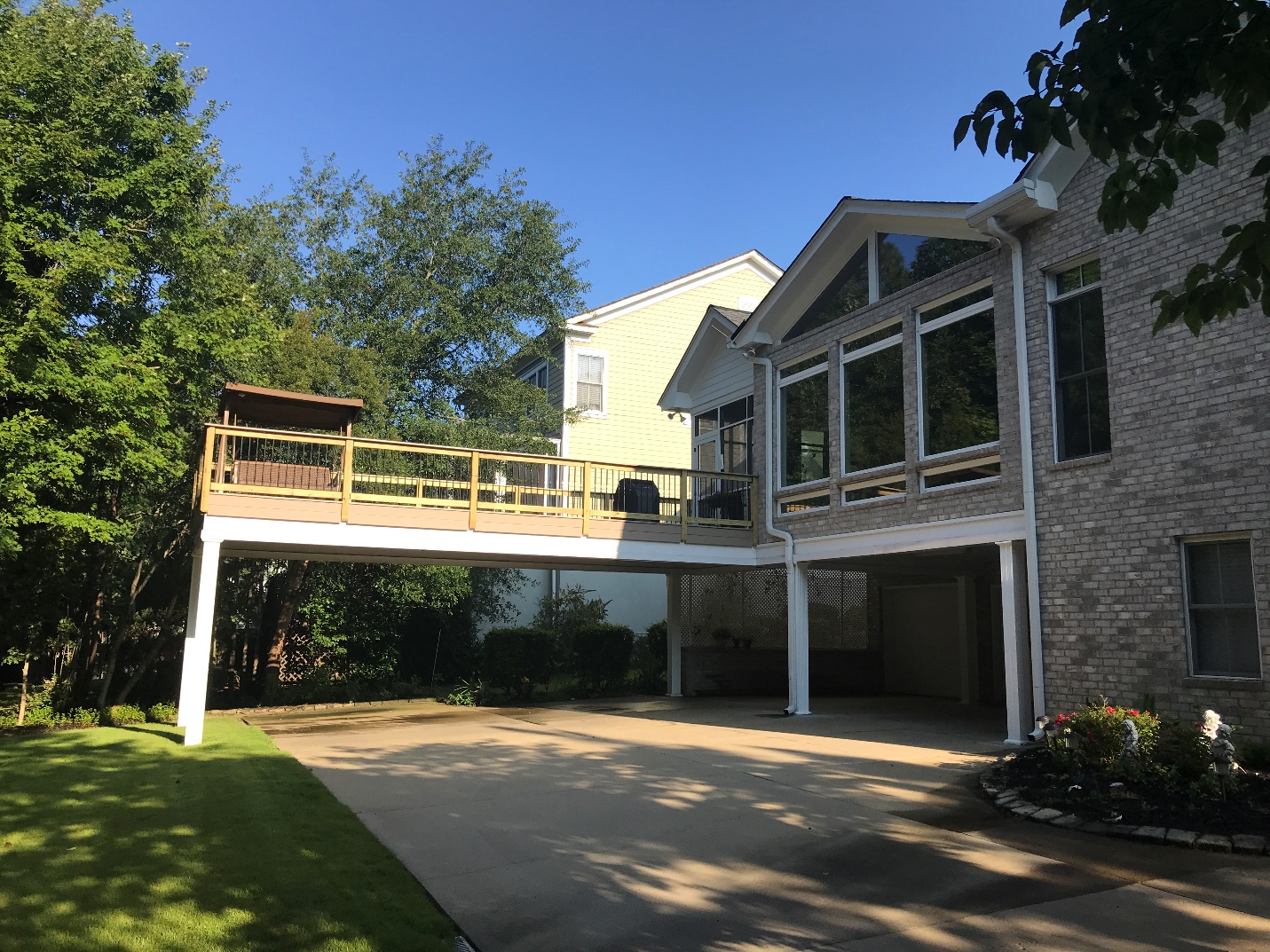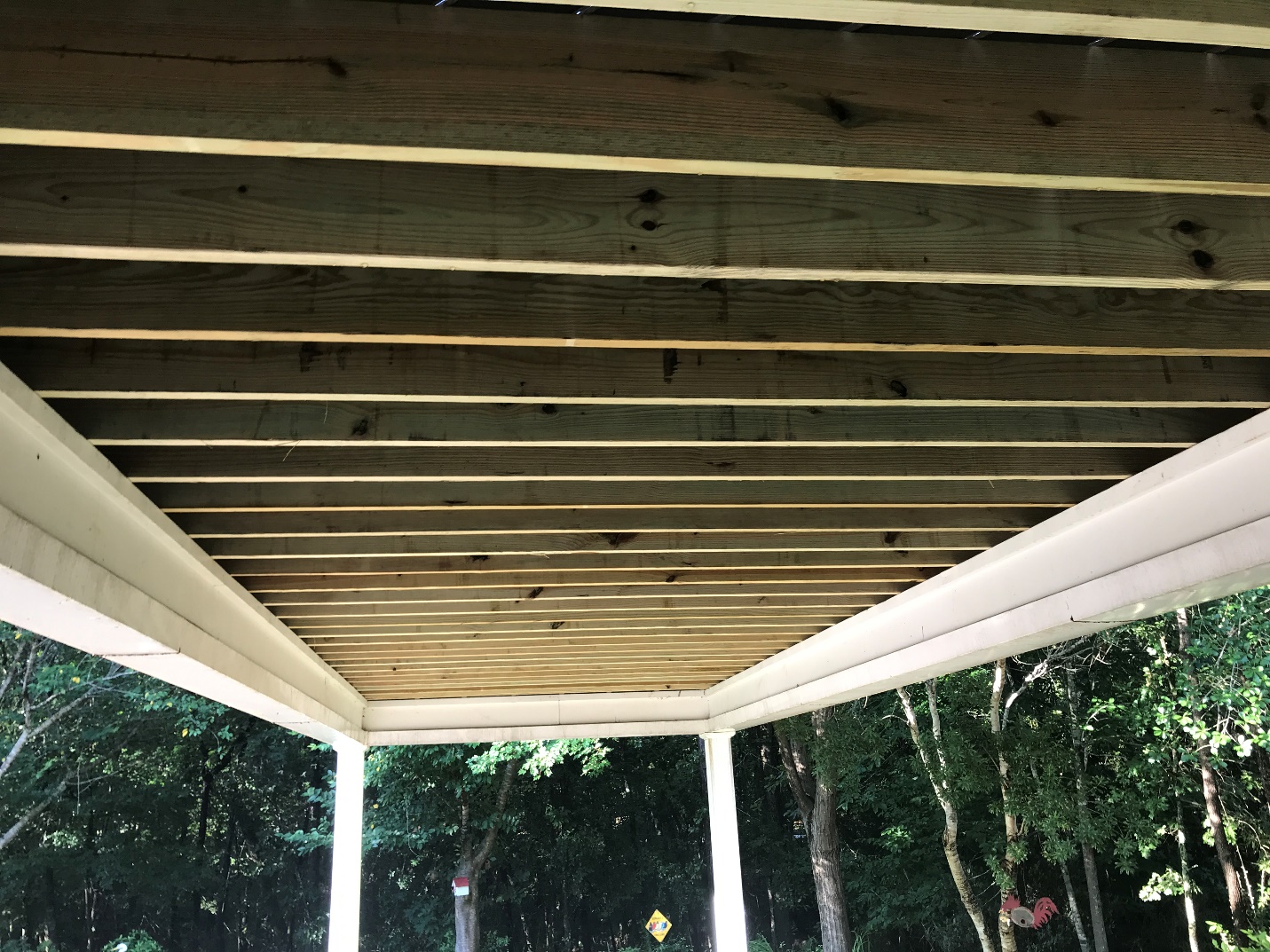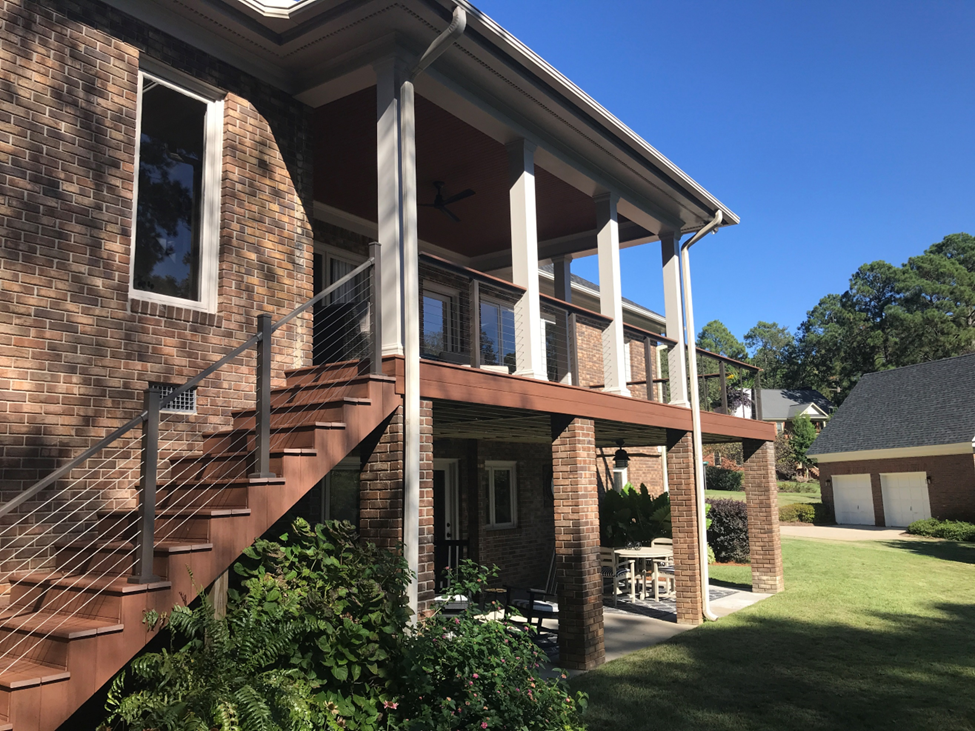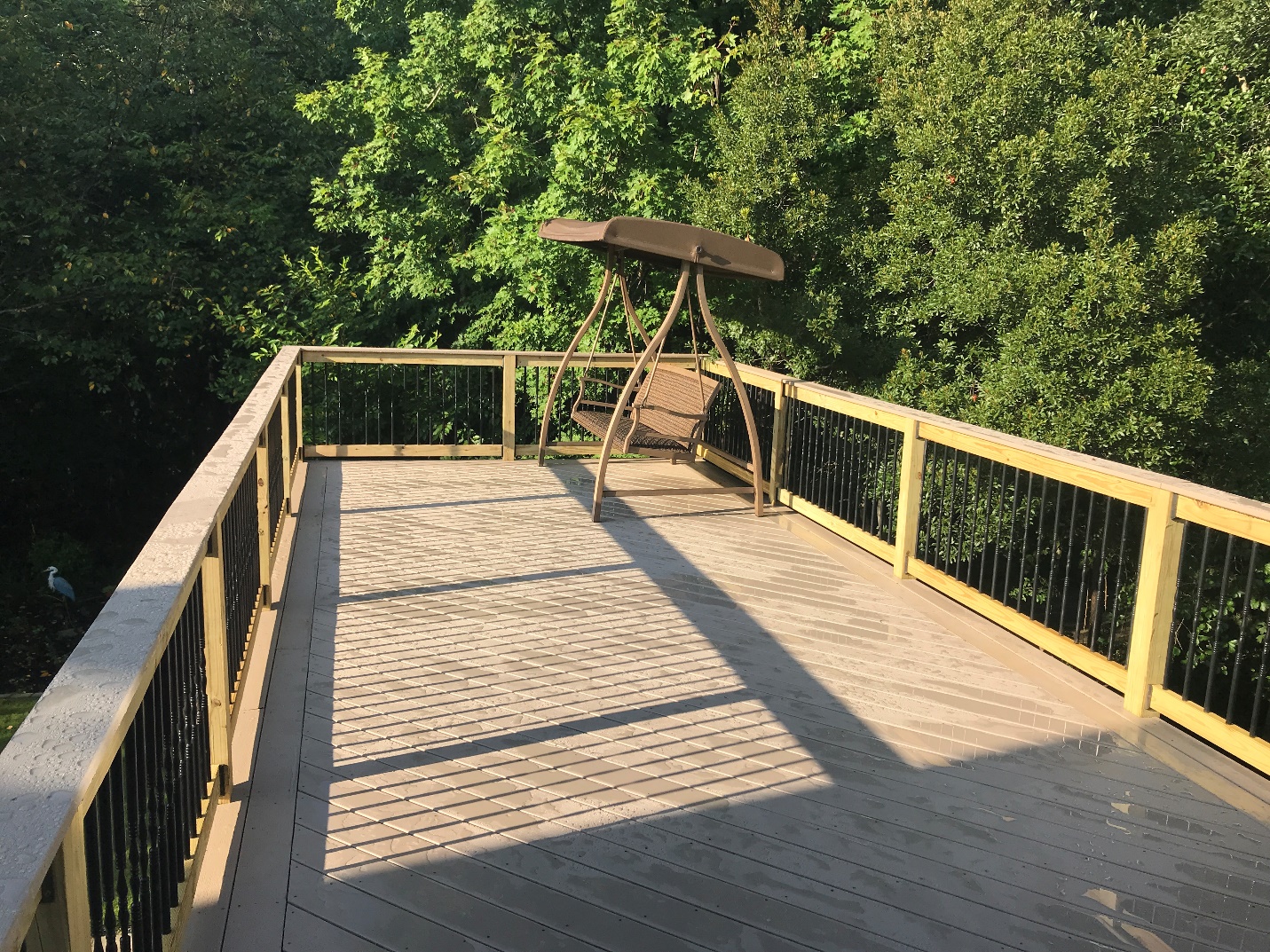Scenario: You like the design of your deck, but the boards are showing their age pretty badly. Now you are wondering if you can simply leave the framing in place and replace the decking boards (we call this “re-decking”). The information we’ve provided below will help you weigh the pros and cons of re-decking vs. building an entirely new deck.
Note: In most areas, a building permit is not required if you are not changing the deck framing and/or footings. This gives you more leeway in terms of your options.

Re-decking a Wooden Deck with Modern Composite Decking – Pros and Cons
If you want to re-deck with composite decking for the low-maintenance benefits, you may run into some problems. Bear in mind that you will be putting down new decking boards with a very long useful life – some are even warranted for 50 years. Unless your current deck framing is in exceptionally good condition, it may not make sense to put new boards with a very long life span on a wood deck frame that is already 10, 15 or 20 years old.
The life expectancy for pressure-treated lumber exposed to the elements can range from 10 to 40 years depending on lots of variables. If your composite deck surface outlives its substructure, you may get a whole new set of problems. The cost of re-decking usually runs around 75% to 85% of the cost of building an entirely new structure. When you weigh the advantages and disadvantages of re-decking vs. building a new deck, a new deck may be the wiser choice.
Another consideration is that removing the old decking boards will cause some damage to the joists, especially if the decking was screwed down. Pulling up screwed-in decking boards with a pry-bar also pulls wood chunks out of the tops of the joists where the new boards will need to be attached. This is not disastrous but does add to the “old age” factor of the existing frame.
Where Composite Re-decking Gets Especially Complicated
The primary issue with re-decking a wood deck with composite boards is the difference in joist spacing. Most older wooden decks were framed with joists 16” on center. Manufacturers of composite decking usually recommend that joists be spaced 12” on center for composite decks. That’s because composite boards are not as stiff as wooden decking boards, and they produce a noticeable bounce when you step in the middle of a 16” gap. It is not a safety issue as these boards are very strong and will not give way. But the bounce is significant enough that, when we have done this in the past, our customers were not happy with the result. Therefore, we don’t recommend replacing wood decking with composite when using the original 16” joists.

A logical solution would be to add more joists. However, when new joists are inserted between old joists, the difference in the moisture content of the new and old boards creates height differences. This becomes more evident as the new boards start to dry out and shrink. Unfortunately, because composite decking boards aren’t as stiff as wood, they follow the contours of the framing and result in a noticeable “waviness” in the deck surface. That waviness will not go away.
The only real answer we have found is to remove all of the old joists and replace them with all new joists placed 12” on center. An experienced carpenter can usually set new joists so that when they shrink it doesn’t create a big height difference from the deck’s original edge bands. The additional labor and materials required for this process explains why re-decking isn’t much cheaper than building a new deck.
Replacing Old Wooden Decking with New Wooden Decking
Re-decking with wooden deck boards presents fewer problems. The life of the new wooden decking boards will be shorter than the composite, so the useful life comparison of deck surface to framing won’t be as drastic. When re-decking wood with wood, we do recommend that you run the decking pattern perpendicular to the joists, as a 16” span is about as far as you should go with pressure-treated decking. We also recommend that you stain the deck as soon as possible after installing the new boards. Deck boards take a large amount of punishment with rain and sun. Our experience is that failure to stain a deck regularly is why wood decking boards age badly to start with.
When Re-decking, Don’t Forget Stairs and Railings
When removing and replacing decking boards, you probably need to replace the railings. With many very attractive railing options on the market today, a new style of railing may give your deck a whole new look. However, railings can be the most expensive part of your deck, so be prepared for some sticker shock. Your design consultant will explain any additional considerations specific to re-decking, based on the railing style you select.

Deck stairs are another concern. The stair stringers are the wide boards that run vertically from the deck frame to the ground, upon which the stair treads are attached. These boards have a weak spot, which is where the largest part of the board area has been cut out to make way for the treads. In some cases the narrowest part is only 3-4 inches wide. These stringers sometimes break during the process of removing the old stair treads and therefore may need to be replaced. Cutting stringers is the trickiest part of building a deck, so it’s important to have an experienced carpenter involved.
Conclusion: When Re-decking Makes Sense, and When it Doesn’t
In summary, you probably can re-deck, rather than replace, your deck structure. However, it is not as simple as it first appears, and just because you can, doesn’t always mean you should. Cost is certainly a factor. The least expensive option will be to replace old wooden decking boards with new wooden decking boards. Just realize that failure to stain these boards regularly (every 2-3 years) will result in significant early aging. Without proper wood maintenance, you will be back in the same place again in a few years.

When re-decking with composite decking boards, the savings often become so minimal that it makes more sense to rebuild from scratch. With an all-new deck, you also have the opportunity to include design changes that can make your deck even more functional and enjoyable.
Call Archadeck of Central South Carolina for a free design consultation with one of our experienced Design Consultants to discuss your many options. We are now doing our initial consultations virtually. This gives you the benefit of a quicker appointment as well as the convenience of having your design consultation wherever you may be (home, work, or even on vacation). And we still provide in-home consultations if you prefer. Call our office at 803-784-1566 to arrange your appointment today.

Marshall Reu, Co-Owner and General Manager
Archadeck of Central South Carolina
